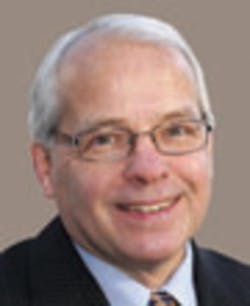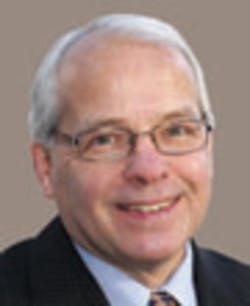The automobile has a bright future, but reinvention will be a key, according to Dr. Larry Burns, professor of engineering at the University of Michigan and director of the Program for Sustainable Mobility at Columbia University. Efforts are underway to shape that future with electric, hybrid, and even autonomous vehicles.
Presenting a keynote address to attendees at the recent IPC APEX EXPO, Burns, former vice president of research and development and strategic planning at General Motors, said that since 1886 when Karl Benz won the first patent for gasoline autos, there has been much achievement. Nevertheless, up until Google logged more than 300,000 self-driving miles, the genetic makeup—mechanical drive and a combustion engine powered by oil-based fuel—has remained relatively constant. The DNA of the car has not evolved much.
That is changing as electric and hybrid vehicles make their appearance, but the evolution is not without contention. An unfavorable Feb. 8 review in the New York Times of a Tesla S all-electric vehicle recounted a cold, miserable winter drive up the East Coast that included a stint with the car on the back of a tow truck when its battery died. That review provoked a sharp response from Tesla CEO Elon Musk, who said the reviewer went out of his way to ensure the battery died in pursuit of a good story. Musk released vehicle datalogs that contradicted some claims of the reviewer. The back-and-forth shed little light on what actually happened, but the incident had the unfortunate effect of causing several pundits, including Charles Lane of the Washington Post and Joann Muller of Forbes to write off electric vehicles altogether.
That’s unfortunate. As Burns put it, the evolutionary success of the ICE vehicle has not come without costs: traffic-related fatalities, delays, land-use issues, and CO2 emissions. Today’s automotive culture, this alum of GM R&D labs said, is unlikely to be sustainable without transformational change. He added that IPC APEX EXPO attendees are situated to fundamentally change the DNA of the automotive industry and take advantage of significant growth opportunities as automobiles transition from mechanical/ICE drive to electrical drive.
A key feature in that transition, he said, is the advent of the driverless vehicle. The age of driverless vehicles will herald light, efficient vehicles that don’t crash—so far at least, robots don’t experience road rage. He suggested such technology could become commercially available by the end of the decade.
With shared fleets of driverless vehicles, he said, a car can arrive at your door when you need it. He cited a case study: Ann Arbor, he said, has 285,000 people, covers 130 square miles, and includes 200,000 personally owned vehicles that make 3.7 trips per day. A simulation of this system, he said, indicates that Ann Arbor needs only 18,000 driverless vehicles per day and would require a subscription of only $3 per day per subscriber. Response times would be less than two minutes, and there would be few “empty miles.”
The road to this future remains foggy. As the fog lifts, we are likely to see a mix of ICE, hybrid, and electric vehicles, including autonomous ones. Speaking at the Chicago Auto Show Feb. 7, Fisker Automotive cofounder and chief designer Henrik Fisker said all-electric vehicles will see limited demand, but demand will pick up for plug-in hybrids like his company’s Karma.
Whatever the mix, as Burns said as he concluded his keynote address, roadway transportation is truly ripe for transformational change—promising a better mobility experience at radically lower consumer and societal cost.
Executive Editor
Visit my blog: http://bit/ly/N8rmKm

